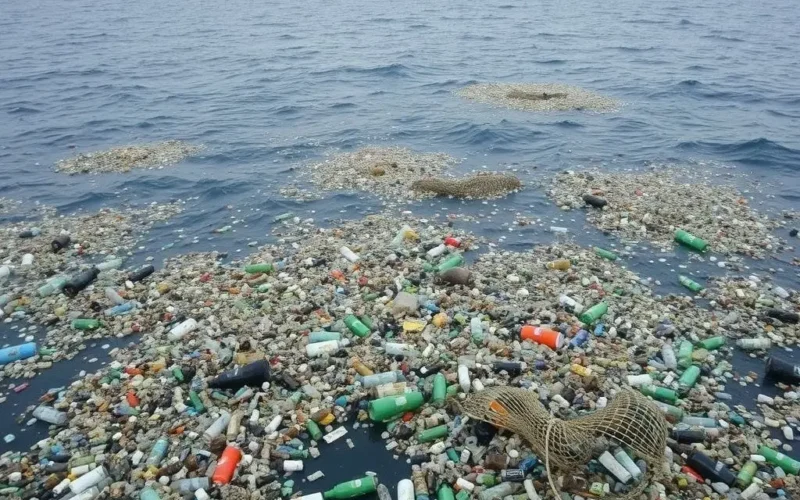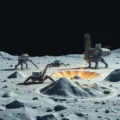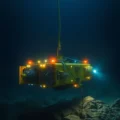Our planet’s vast, blue heart—the ocean—is in distress, choked by an overwhelming tide of plastic waste. It’s a scene that feels lifted from a dystopian future, but it’s our current reality. Yet, amidst this daunting challenge, a wave of innovation is rising, offering a glimmer of hope. Imagine technology stepping in, extending a lifeline to these precious waters. We’re talking about ambitious, large-scale systems designed to tackle the problem head-on, alongside futuristic, autonomous helpers navigating the depths.
The scale of the ocean plastic crisis requires bold thinking and equally bold technological solutions. From colossal nets engineered to capture debris drifting on currents to the intriguing prospect of smart robots designed to seek and potentially neutralize plastic waste, these aren’t just theoretical concepts anymore. They represent vital steps forward in the global fight for cleaner, healthier oceans.
To catch a quick, compelling glimpse of these ideas in action, take a moment to watch this short video:
That byte-sized look highlights the potential, but let’s dive deeper into how these technologies aim to turn the tide on ocean plastic.
Table of Contents
The Scale of the Problem: A Sea of Plastic
Before exploring the solutions, it’s crucial to understand the magnitude of the issue. Millions of tons of plastic enter the oceans every year. This debris doesn’t just float on the surface; it permeates the entire water column, reaching the deepest trenches. It harms marine life through entanglement and ingestion, breaks down into harmful microplastics, and disrupts delicate ecosystems. Cleaning this up is one of humanity’s most significant environmental hurdles.
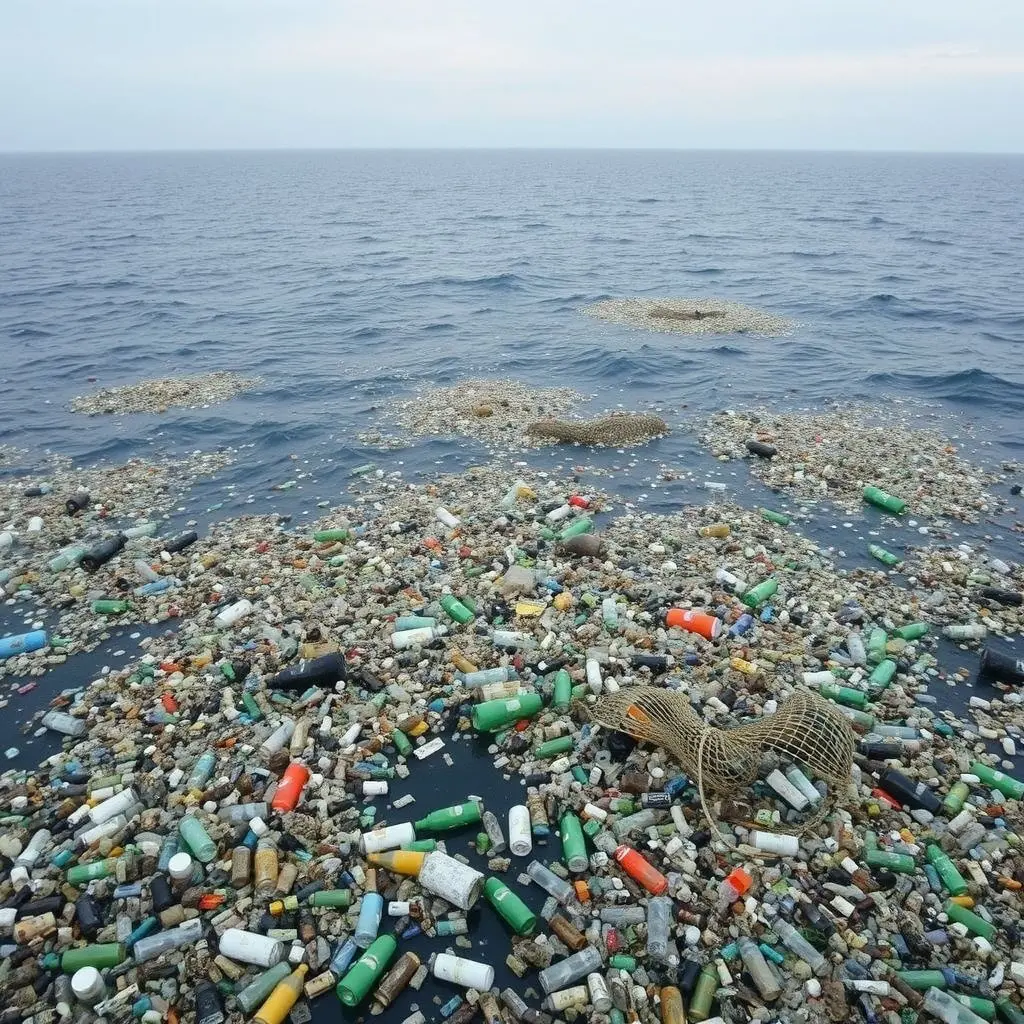
Giant Passive Collection Systems: Casting a Wide Net
One of the most prominent technological approaches involves deploying large-scale systems to capture plastic concentrated by ocean currents. The concept is akin to creating artificial coastlines or barriers in areas known as ‘garbage patches,’ where currents naturally converge debris.
How Do They Work?
Systems like those developed by The Ocean Cleanup project utilize long, floating barriers (often several hundred meters or even kilometers long) with a skirt extending below the surface. Instead of actively chasing plastic, these systems are designed to drift passively with the currents, moving faster than the plastic they aim to capture. This difference in speed allows the plastic to accumulate within the U-shaped or parabolic barrier, much like a funnel.
Support vessels then periodically collect the concentrated plastic, hauling it onto ships for transport back to shore for recycling or proper disposal. The design aims to minimize interference with marine life, allowing most sea creatures to swim beneath the barrier.
The Potential and Challenges
The potential is significant: removing large quantities of plastic from the high seas, including larger items that haven’t yet broken down into microplastics. This is crucial for mitigating harm to marine animals and preventing further fragmentation.
However, these systems face considerable challenges:
- Harsh Environment: The open ocean is incredibly demanding on equipment, requiring materials and engineering robust enough to withstand storms, waves, and saltwater corrosion.
- Logistics: Deploying, monitoring, maintaining, and emptying these systems far offshore is a complex and costly operation.
- Effectiveness: While successful in capturing significant amounts of plastic, questions remain about their overall impact compared to the continuous influx of new pollution and their ability to capture smaller microplastics effectively.
- Environmental Impact: Rigorous study is needed to ensure these systems don’t inadvertently harm marine ecosystems, despite efforts to design them to avoid this.
Despite the hurdles, the iteration and improvement of these large-scale systems demonstrate a tangible path towards cleaning up legacy plastic in the oceans.
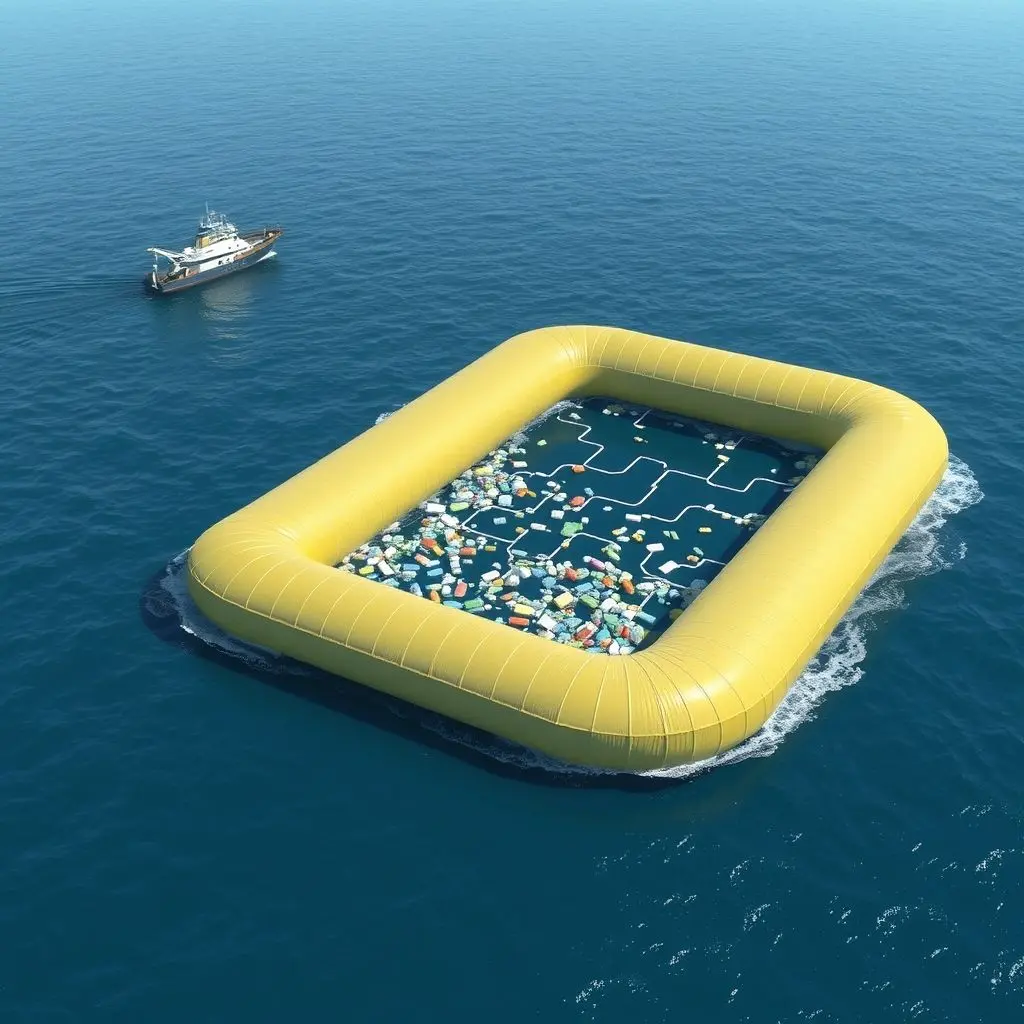
Autonomous Robots: The Tiny Tech Titans of Cleanup?
At the other end of the scale are autonomous robots – smaller, mobile units designed to navigate specific areas or even operate beneath the surface. While the idea of ‘plastic-eating robots’ sounds like science fiction, current research explores various capabilities for these bots.
Collecting and Identifying Plastic
Many concepts focus on autonomous surface or underwater vehicles equipped with sensors and collection mechanisms. They could potentially:
- Identify Plastic: Using cameras and AI to distinguish plastic from marine life or other debris.
- Navigate: Autonomously moving through harbors, rivers (which are major sources of ocean plastic), or coastal areas.
- Collect: Scooping, netting, or even using suction to gather plastic waste.
- Map Pollution: Sending data back about pollution hotspots.
The ‘Plastic-Eating’ Concept
The idea of a robot *eating* plastic typically refers not to literal consumption but to carrying onboard processes to break down or densify the plastic. This could involve shredding, melting, or potentially using chemical or biological processes (like plastic-degrading enzymes being explored in labs) to reduce the volume or alter the form of the plastic collected on site before returning to a base.
Current prototypes are mostly in the research and development phase, focusing on specific tasks like collecting debris in marinas or using computer vision to identify plastic types. The leap to fully autonomous, self-sufficient, plastic-processing bots in the open ocean is significant.

Challenges for Autonomous Bots
Developing effective ocean-cleaning robots presents unique difficulties:
- Energy: Operating autonomously for extended periods in the ocean requires significant and reliable power sources.
- Navigation & Avoidance: Safely navigating around obstacles, marine life, and varying ocean conditions is complex.
- Durability: Like larger systems, they must withstand the corrosive, high-pressure ocean environment.
- Distinguishing Plastic: Accurately identifying plastic, especially microplastics, amidst other debris and marine life is a significant AI and sensor challenge.
- Capacity: Smaller bots have limited storage capacity for collected waste.
Despite these challenges, the potential for these versatile, potentially scalable units to target specific areas or complement larger systems is immense.
Are These Tech Solutions the Silver Bullet?
While these technological marvels – the giant nets sweeping wide and the clever bots cleaning up the tide – offer inspiring possibilities, it’s vital to recognize they are part of a much larger puzzle. Cleaning up existing plastic in the ocean is essential, but the problem will persist, even worsen, unless we stop plastic pollution at its source.
Reducing the production and consumption of single-use plastics, improving waste management systems globally, and preventing plastic from entering rivers and coastal areas are the ultimate long-term solutions. Technology for cleanup must work in tandem with these preventative measures, not replace them.
Looking Towards a Brighter Horizon
The development of giant passive systems and autonomous robots signifies humanity’s ingenuity and determination to address the environmental crisis we’ve created. These technologies, continuously refined and scaled, hold the promise of removing a significant portion of the plastic currently harming our oceans.
With continued research, investment, and global cooperation, the tools available to fight ocean plastic will only become more sophisticated and effective. The future of our ocean, while facing severe threats, carries a hopeful sign, illuminated by the innovative spirit of tech’s embrace. It’s a future that requires both cutting-edge technology and fundamental changes in how we produce, use, and dispose of plastic worldwide.
Frequently Asked Questions About Ocean Cleanup Technology
Q1: Are giant ocean cleanup systems effective?
A: Systems like The Ocean Cleanup’s have demonstrated the capability to collect significant amounts of plastic, including large debris and microplastics. Their effectiveness is continuously improving with design iterations, though challenges remain in terms of scalability, cost, and capturing all types of plastic across the entire ocean.
Q2: Do these technologies harm marine life?
A: Designers of these systems prioritize minimizing harm. Large passive systems are engineered with skirts that allow most marine life to pass underneath, and speeds are slow. Autonomous robots are being developed with sophisticated sensors and AI to identify and avoid marine animals. However, ongoing monitoring and environmental impact assessments are crucial.
Q3: Can plastic-eating robots really digest plastic?
A: The term ‘plastic-eating’ in this context usually refers to robots that collect plastic and then process it onboard through mechanical (shredding, melting) or potentially future biochemical means (using enzymes). They don’t literally ‘eat’ or consume it like an organism. This capability is still largely in the research and prototype phase for ocean-going bots.
Q4: Can these technologies clean up microplastics?
A: Larger passive systems can capture some microplastics that are mixed with larger debris. Developing technology to efficiently and safely collect vast quantities of free-floating microplastics scattered across the ocean is a major challenge, though some robotic concepts aim to filter water or use other methods.
Q5: How soon will these technologies make a significant difference?
A: Large-scale systems are already removing thousands of kilograms of plastic. Autonomous robots are less mature for widespread ocean cleanup. While technology is accelerating cleanup efforts, the sheer volume of existing plastic and the ongoing pollution means that a significant, noticeable difference globally will take many years of sustained effort, combining technology with drastic source reduction.
